In and around the city
Home > Sightseeing Information: Aomori City > In and around the city
Strolling in the Bay Area, feeling the ocean breeze
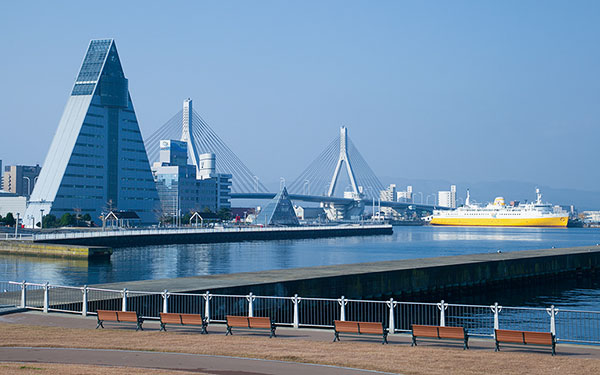
The Bay Area has various spots of interest, which are full of Aomori’s charms, including the Nebuta Museum “Wa Rasse”, A-FACTORY (a shopping complex housing an apple cider brewery and a food market), and the Seikan Ferry Memorial Ship Hakkodamaru. You can enjoy shopping and take in the view of the bay bridge as you walk along the wooden promenade.
Aomori Prefecture Tourist Center (ASPAM)
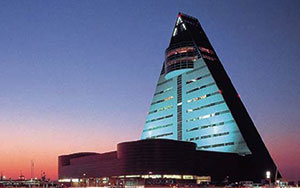
ASPAM is a 15-floor, triangular building reminiscent of the “A” in Aomori. It has one of the largest souvenir shops in the prefecture which sells a wide variety of Aomori’s local products. There is also a panoramic movie introducing Aomori’s sightseeing spots, and free daily performances of Tsugaru Shamisen (a Japanese stringed musical instrument).
Seikan Ferry Memorial Ship Hakkodamaru
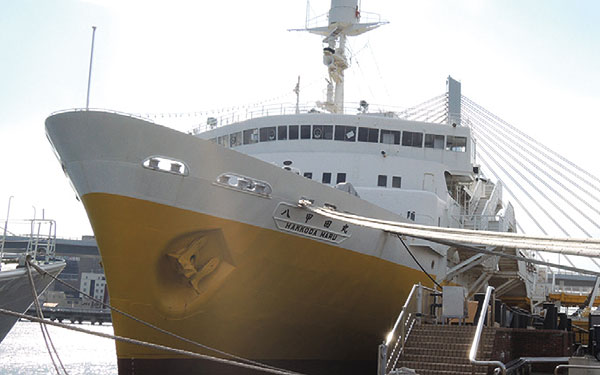
This is Japan’s first railway ferry museum, established inside the ferry itself. You can learn about the history of the ferries that travelled the Tsugaru Channel for nearly 80 years. There is also a “Seikan World” display, which replicates the morning market of the ’50s and ’60s.
Enjoy the fresh seafood market!

There are several markets around Aomori Station, selling a wide variety of seafood, including scallops from Mutsu Bay. The multi-purpose commercial facility “AUGA” (in front of Aomori Station) has a food market in the basement, with approximately 30 shops selling fresh fish, dried foods, and vegetables. At the Aomori Gyosai Center, also known as Furukawa Fish Market, you can enjoy "Nokkedon”, a rice bowl where visitors can choose their favorite sashimi toppings. The market has flourished since the 60s and is hugely popular among Aomori City’s residents.
Unique display space of Aomori Museum of Art

This museum has year-round displays of artworks by artists from Aomori including Shiko Munakata, Michi Nara, Shuji Terayama, and Toru Narita, the artist famous for his original Ultraman illust-rations. In the gigantic exhibition space Aleko Hall, whose open ceiling allows it to expand through four floors, there are year-round displays of three of the four 15m x 9m works Mark Chagall painted for the stage of the ballet Aleko.
Special historical site Map Sannai-Maruyama Site
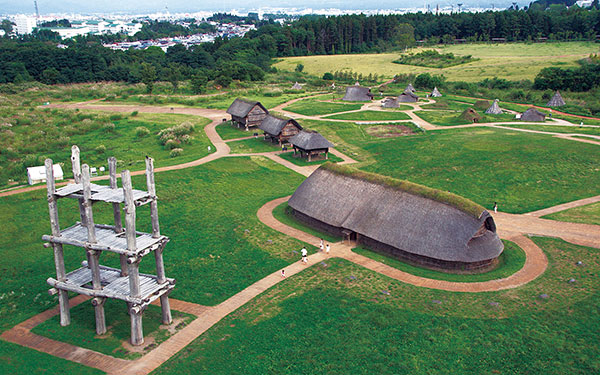
Sannai-Maruyama Site is a nationally designated historical site that changed the understanding of Jomon period history. It is one of the largest remains of Japan’s Jomon period, dating back approximately 5,500-4,000 years.
You can visit the large reconstructed pit-dwellings and pillar-supported buildings with volunteer guides. The adjacent “Jomon Jiyukan” park center has a wealth of displays introducing the site, as well as displays of important cultural properties excavated from the site, and allows visitors to try their hand at the craftsmanship of the Jomon period.
Munakata Shiko Memorial Museum of Art

This museum displays artworks of world-renowned Aomori native and woodblock print artist Shiko Munakata. Works on display include woodblock prints (most prominently his masterpiece “Ten Great Disciples of Buddha”), as well as his highly-skilled calligraphy works and oil paintings. These powerful artworks are illustrate Munakata’s unique passion.
Seiryuji Temple
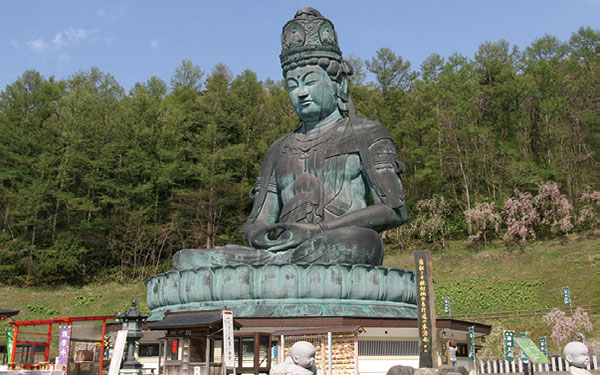
This temple is known for its 21.35m-tall bronze statue of Dainichi Nyorai Buddha, which is the largest seated Buddha in Japan. It is taller than the great Buddha statues of Nara and Kamakura. Viewed from below, the statue emanates a powerful presence.
Komakino site

Komakino site, a national historic site, was a ritual place in Jomon period (12,000‒300 BC), that is typical of ancient Aomori. It is one of the largest stone circles in Japan, created approximately 4,000 years ago, with an extraordinary size and design.
Visitors can tour the site with a guide and learn various facts about the Jomon period in Aomori at Komakinokan, the site’s Jomon-period exhibition center.
Aomori Museum of History
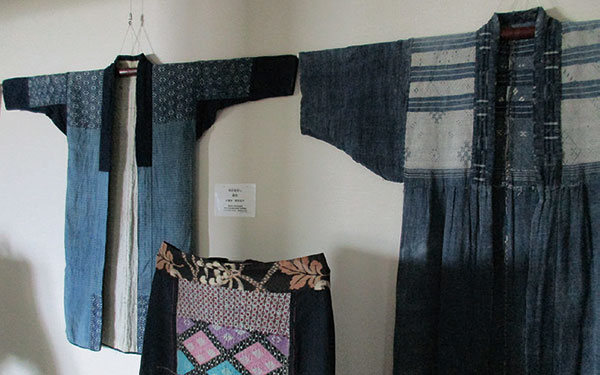
Aomori Museum of History is an exhibition center that provides comprehensive coverage of local history and folklore tradition centered around Aomori. There are many materials on display, including sashiko-stitched kimono (sashiko is a type of stitching traditionally used to reinforce points where clothing tends to wear out), which are Designated Tangible Folk-Cultural Properties of Aomori Prefecture, as well as other items from which visitors can learn about life in Aomori. Also worth visiting is a 30m-high observatory, from which visitors can see the entire city of Aomori, Mutsu Bay, the Shimokita Peninsula and the Tsugaru Peninsula.